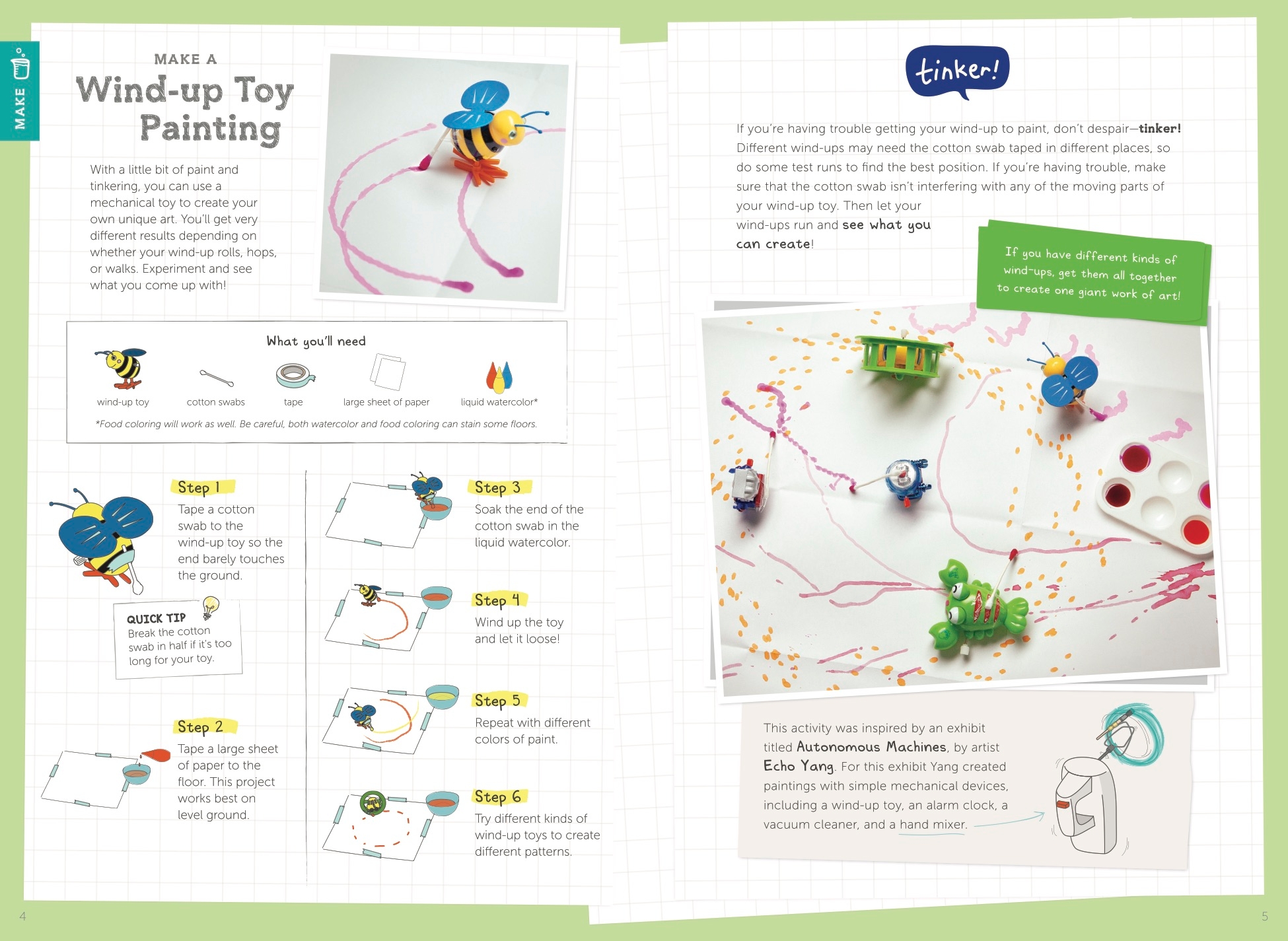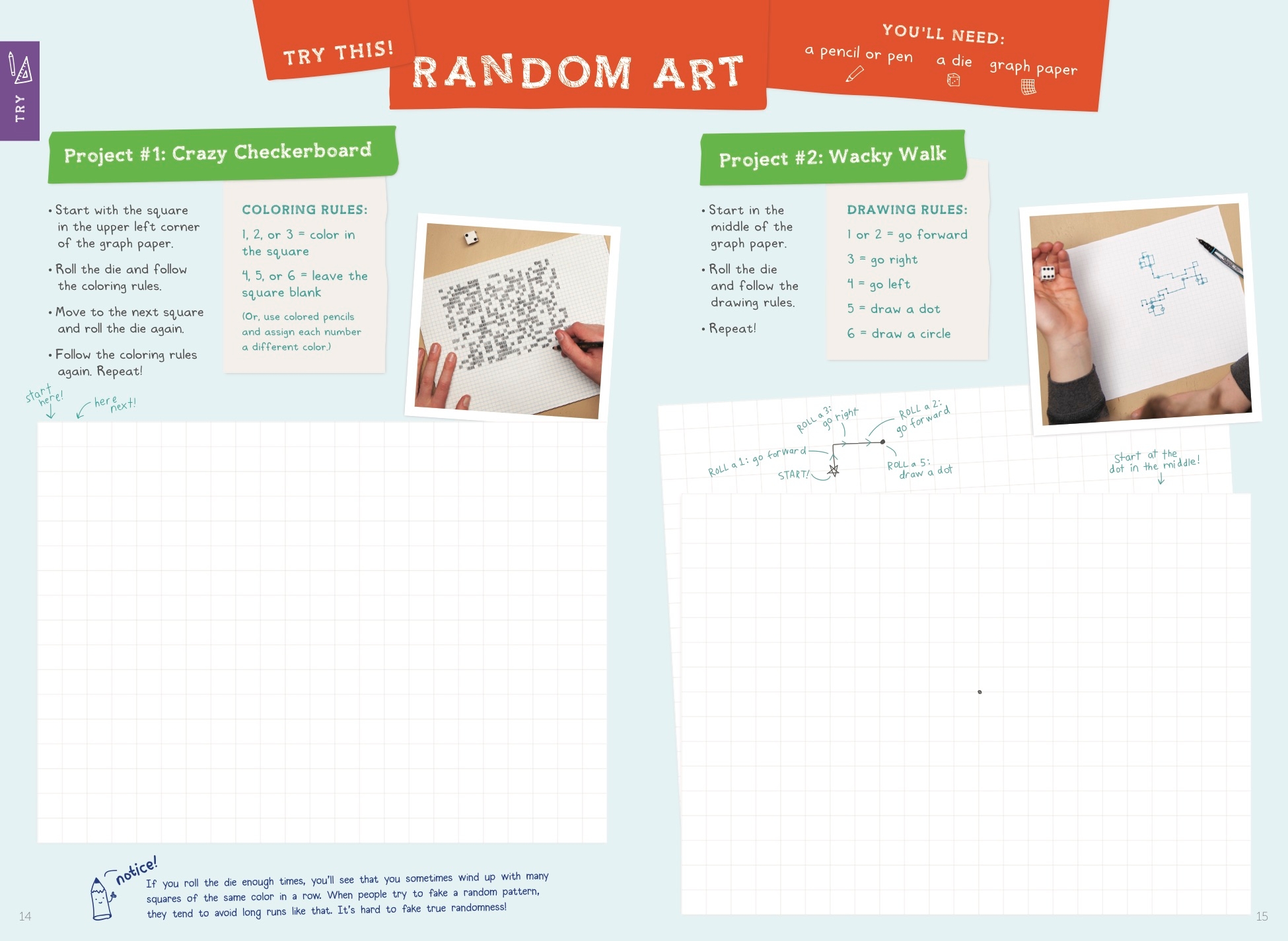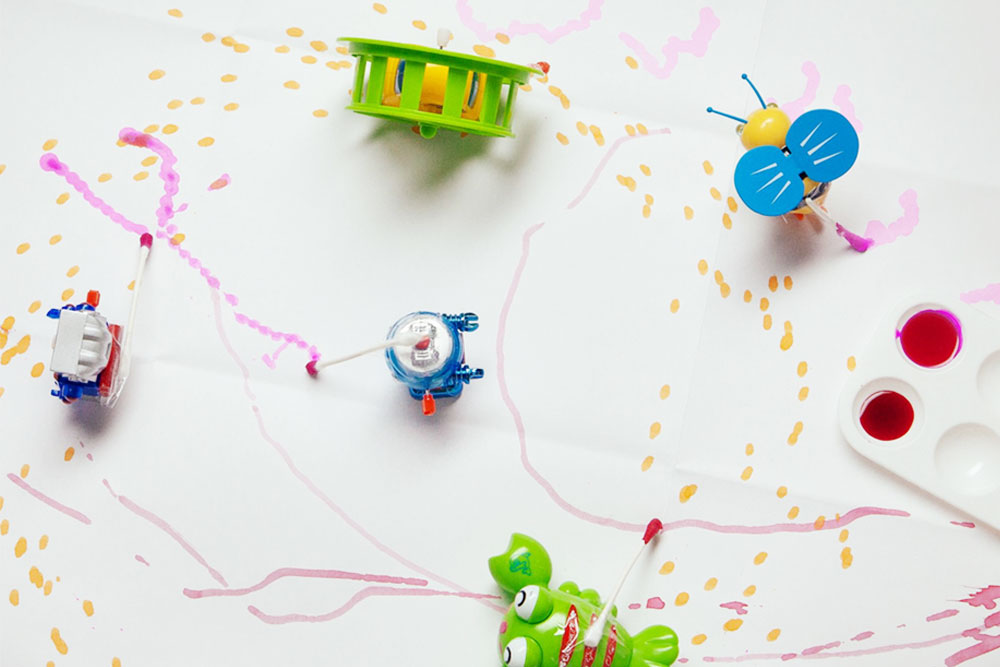Anything from a computer program to a hand mixer can create art. Of course, a human artist still needs to be involved somewhere in the process. A vacuum or a wind-up toy isn’t going to wake up one morning and decide to make a painting!
But once the wind-up toy is moving, the artist no longer has control over the patterns it creates. That same is true of many computer programs made to create digital art. The wind-up toy and the program both operate on their own. This kind of art is called generative art.
Artist Echo Yang created paintings with simple mechanical devices, including a wind-up toy, an alarm clock, a vacuum cleaner, and a hand mixer, for an exhibit title Autonomous Machines.
Autonomous Machines – TinToy (Chicken) from echo yang on Vimeo.
You can do the same thing yourself, with a wind-up toy, some paint, and a little bit of tinkering.

Math + Randomness = Surprising Art
In computer-generated algorithmic art, the design of the piece is created by following a set of rules. An algorithm is just a set of rules. With just a die, a pencil or pen, and graph paper, you can make your own random art. This proves that rules + randomness = something totally unique!

You can learn more about computer-generated art, as well as concepts like centripetal force, momentum, and resistors with our Spin Art Machine crate. This crate is a super fan favorite, so it’s only available with a Tinker Crate subscription of 3 months or more
